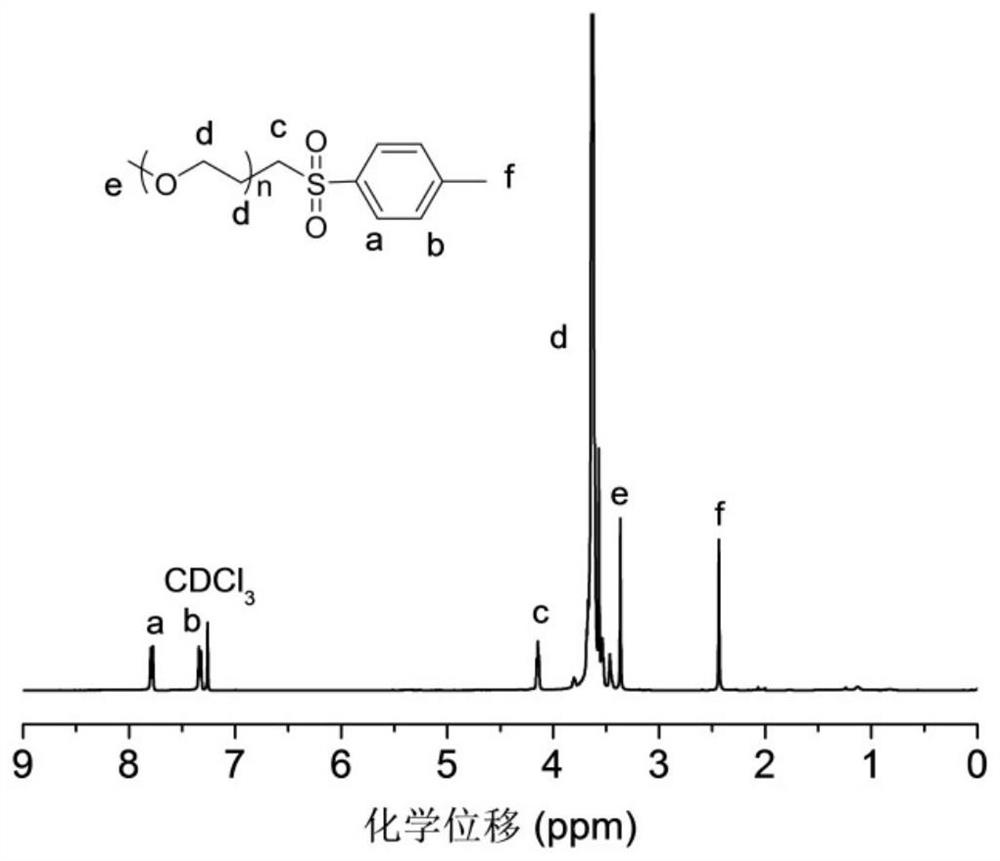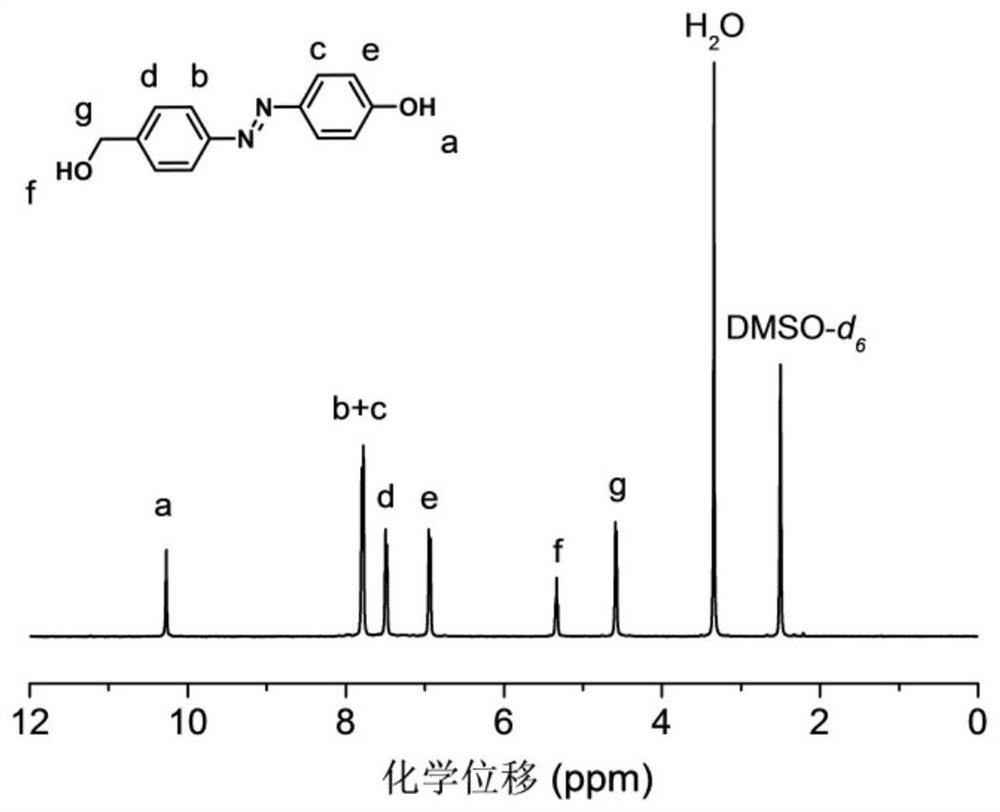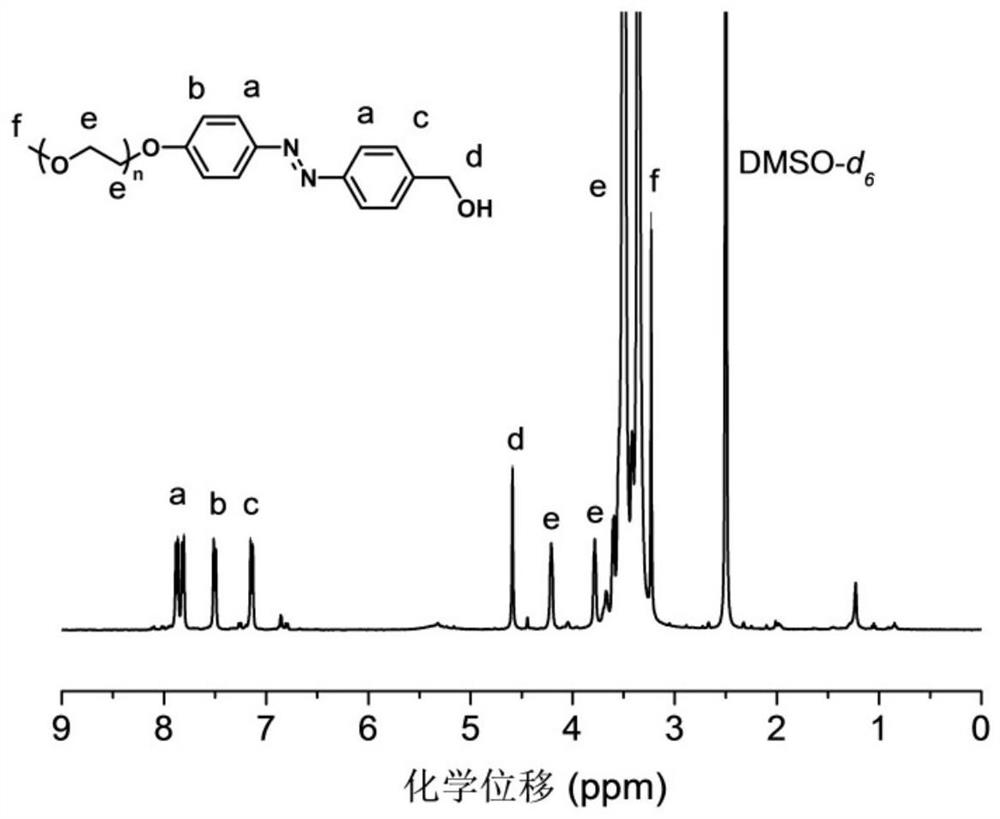Hypoxia-responsive chemically modified protein and its preparation method and application
A chemical modification and responsive technology, applied in the field of hypoxia-responsive protein modification and its preparation, can solve problems such as reducing non-specific effects of normal cells, and achieve the effects of reducing non-specific toxicity, protecting stability and restoring activity
- Summary
- Abstract
- Description
- Claims
- Application Information
AI Technical Summary
Problems solved by technology
Method used
Image
Examples
preparation example Construction
[0040] The preparation method of the hypoxia-responsive protein-modified polymer of the present invention is as follows:
[0041] 1) Preparation of activated monomethoxypolyethylene glycol: Dissolve monomethoxypolyethylene glycol in anhydrous toluene, and remove the solvent and water under reduced pressure; add anhydrous dichloromethane, triethylamine and p-toluenesulfonyl chloride, the mixture was stirred at room temperature for 5 to 8 hours; after continuing to add p-toluenesulfonyl chloride, stirred for 9 to 11 hours, and filtered off the insoluble matter; the filtrate was concentrated and separated by silica gel column chromatography to obtain activated monomethoxy poly Ethylene glycol, compound 1;
[0042] 2) Preparation of hydroxyazobenzene: Cool the suspension of p-aminobenzyl alcohol and water to 0-5 o C, and hydrochloric acid was added to the mixture; NaNO was added to the mixture at 0-5°C 2 Aqueous solution, and 0~5 o Stir at C for 1 hour; add the mixture of pheno...
Embodiment 1
[0059] A method for preparing an oxygen-responsive polymer, specifically as follows:
[0060] Preparation of activated monomethoxypolyethylene glycol: Dissolve monomethoxypolyethylene glycol (15 g, 15 mmol) in anhydrous toluene (100 mL) and remove the solvent under reduced pressure. The process was repeated twice to remove traces of water. Then anhydrous dichloromethane (DCM, 250 mL), triethylamine (14.5 mL, 105 mmol) and p-toluenesulfonyl chloride (20 g, 105 mmol) were added sequentially. The mixture was stirred at room temperature for 6 hours. After adding p-toluenesulfonyl chloride (20 g, 105 mmol), the stirring was continued for 10 hours, and the insoluble matter was filtered off. The filtrate was concentrated, and the obtained crude product was separated by silica gel column chromatography (dichloromethane / methanol = 10 / 1) to obtain a white solid as activated monomethoxypolyethylene glycol (9.28 g, yield 48%), deuterated Chloroform NMR, with figure 1 its NMR spectrum....
Embodiment 2
[0065]
[0066] Use the hypoxia-responsive protein modification polymer synthesized in Example 1 to modify protein ribonuclease A (RNase), as follows:
[0067] To modify the primary amino group of lysine on protein RNase with azobenzene, dissolve RNase (5 mg) and compound 4 (5 mg) in NaHCO 3 solution (0.1 M, pH 8.5) and dimethyl sulfoxide (DMSO), the two were mixed and stirred at room temperature for 10 hours, after which the mixture was purified by ultrafiltration (MWCO = 3.5 kDa) and lyophilized (-80 °C), Obtain azobenzene-modified RNase (RPAB) for the following tests.
PUM
 Login to View More
Login to View More Abstract
Description
Claims
Application Information
 Login to View More
Login to View More - Generate Ideas
- Intellectual Property
- Life Sciences
- Materials
- Tech Scout
- Unparalleled Data Quality
- Higher Quality Content
- 60% Fewer Hallucinations
Browse by: Latest US Patents, China's latest patents, Technical Efficacy Thesaurus, Application Domain, Technology Topic, Popular Technical Reports.
© 2025 PatSnap. All rights reserved.Legal|Privacy policy|Modern Slavery Act Transparency Statement|Sitemap|About US| Contact US: help@patsnap.com



